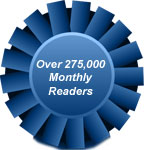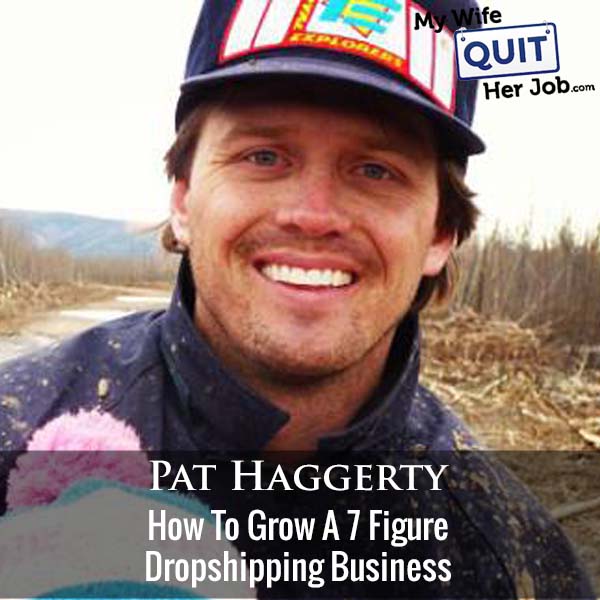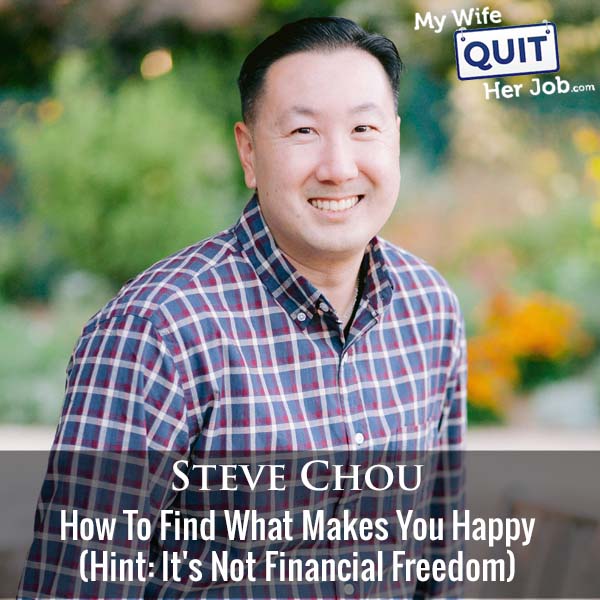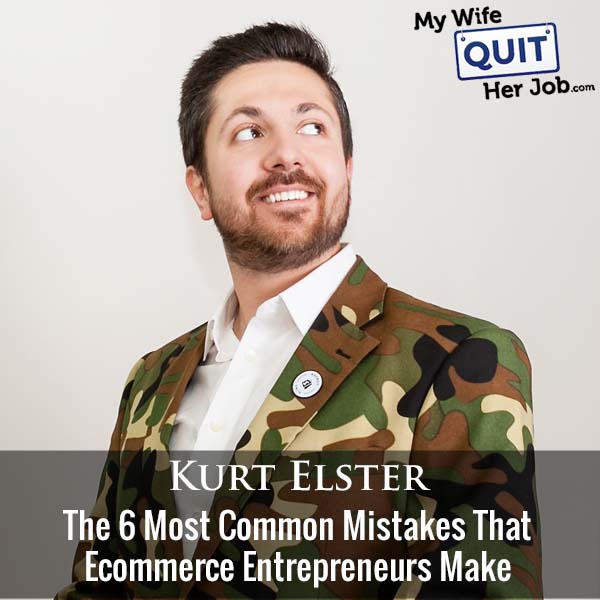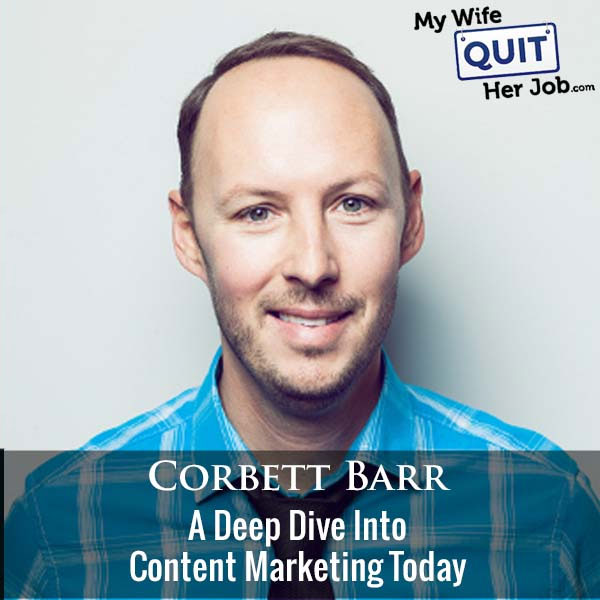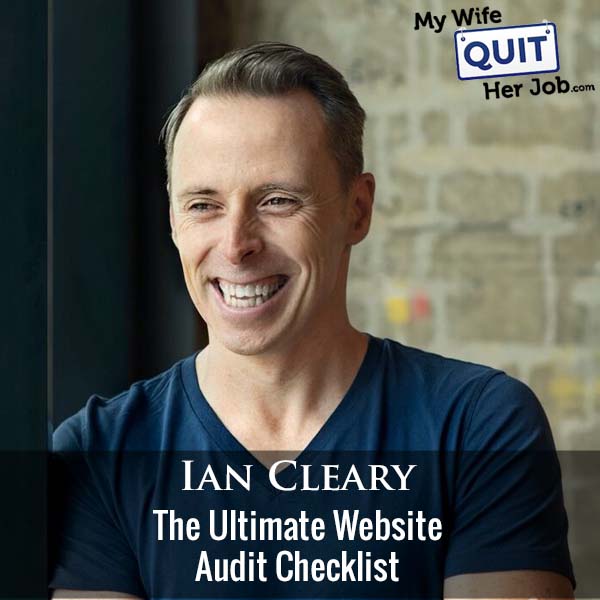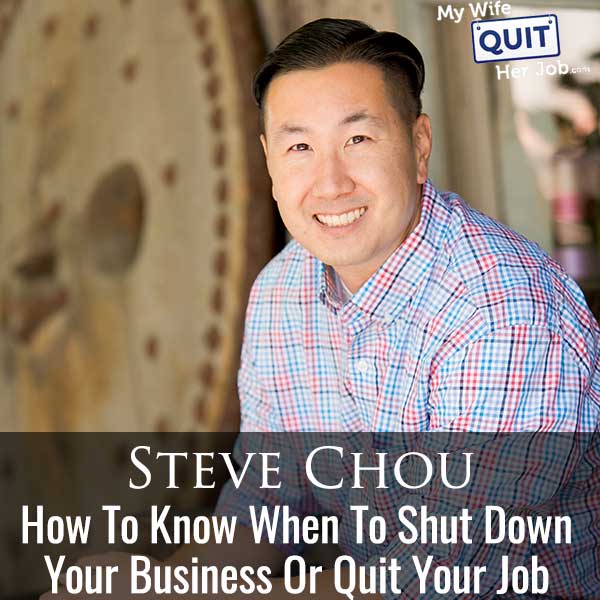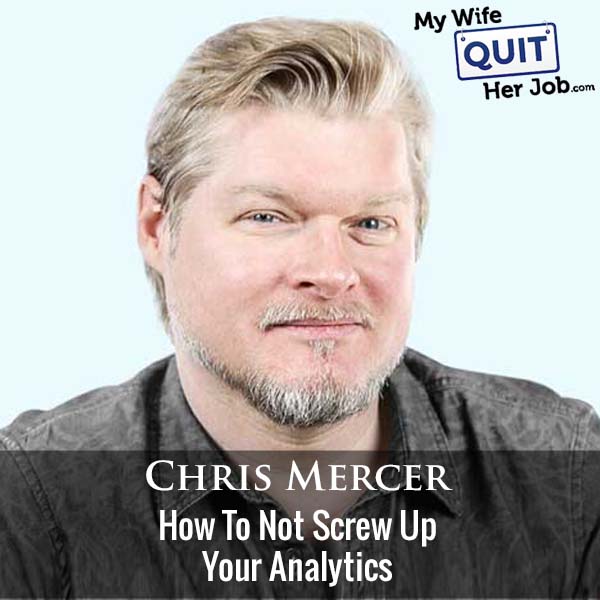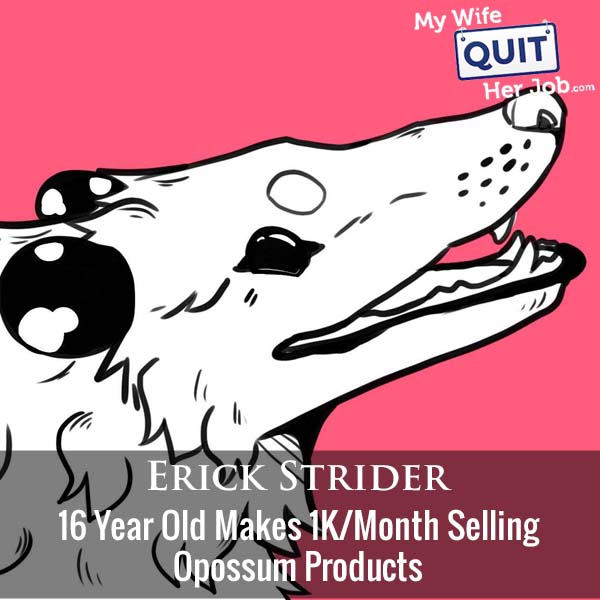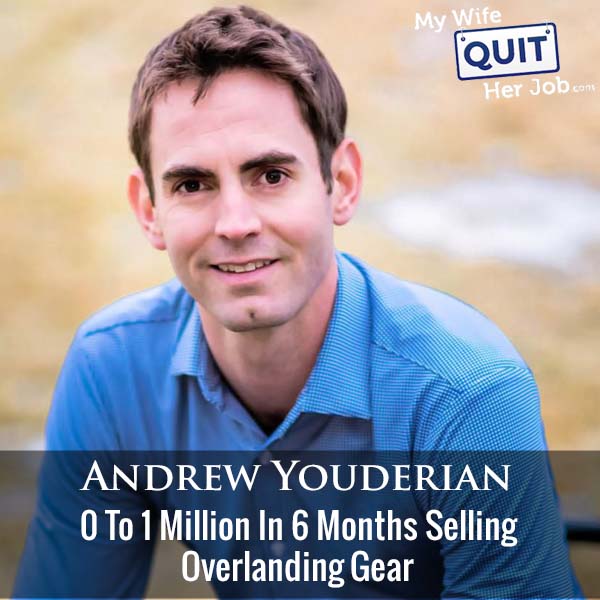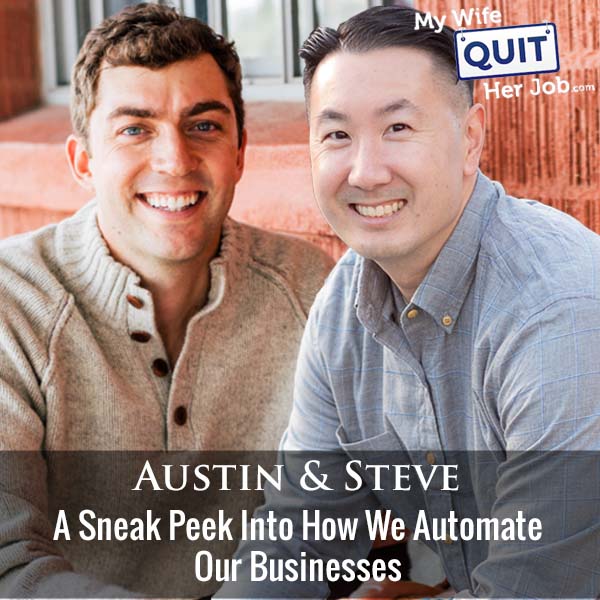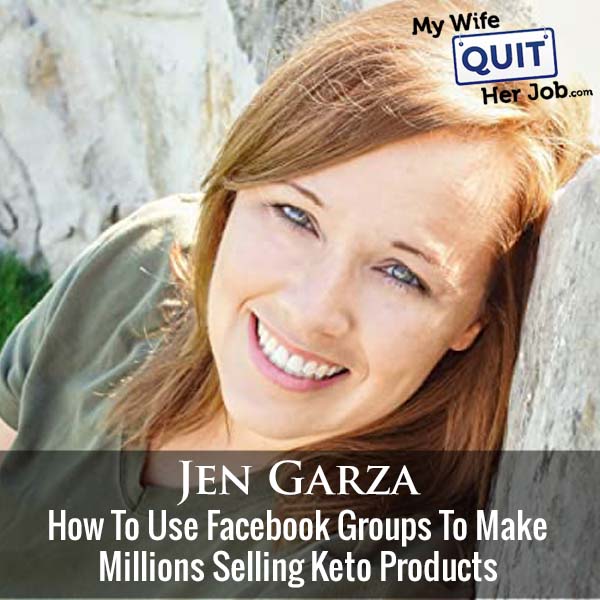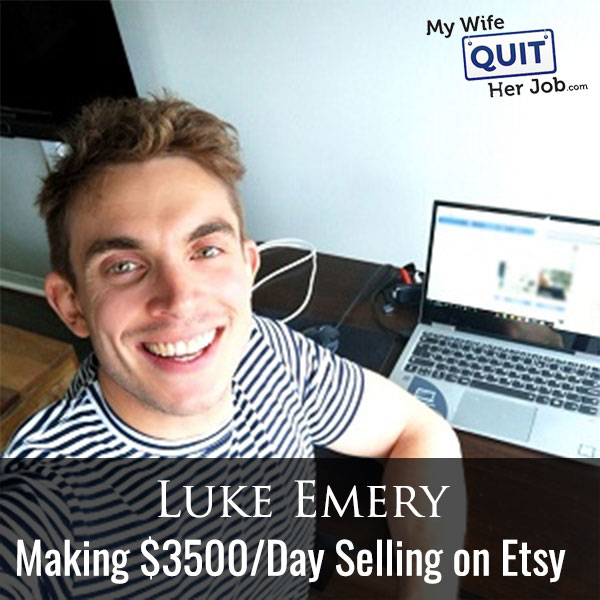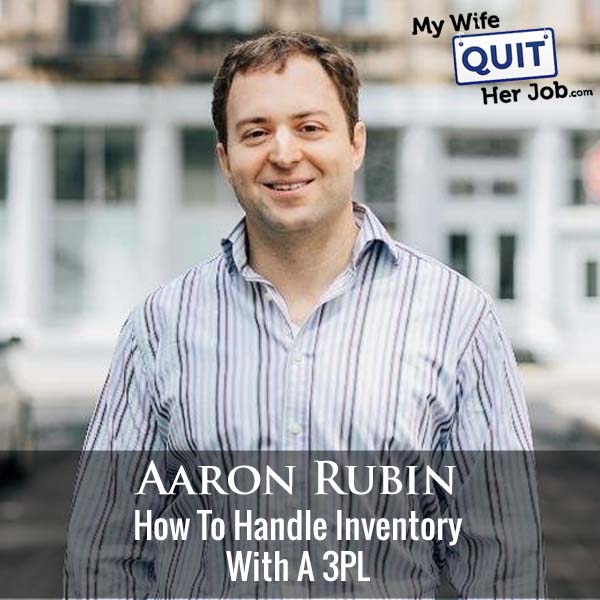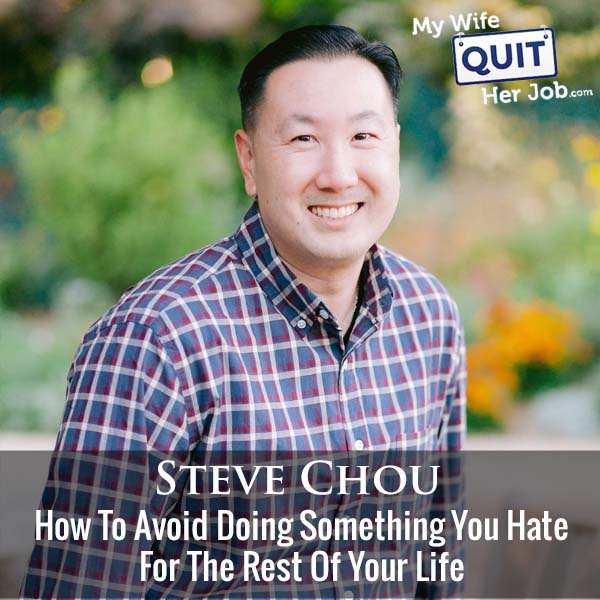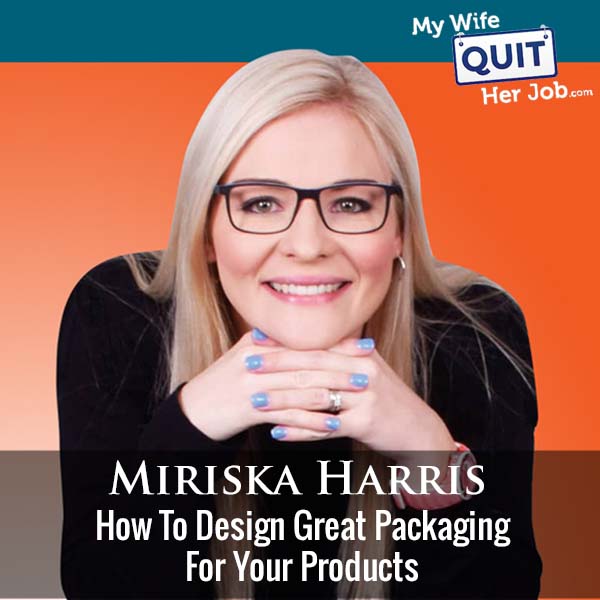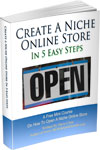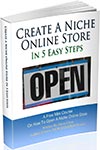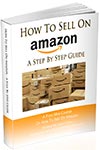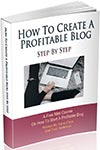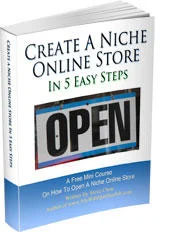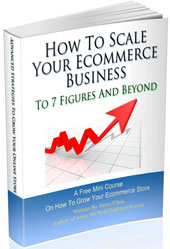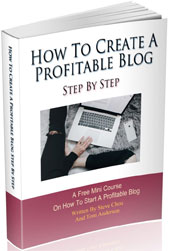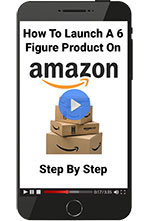Podcast: Download (Duration: 52:41 — 60.6MB)
Today I’m thrilled to have Pat Haggerty on the show. Many years ago, Andrew Youderian sold his dropshipping business, Right Channel Radios to Pat. And since the sale, Pat has grown Right Channel Radios significantly.
In this episode, Pat teaches us what he did to grow his sales and how he’s improved the business dramatically since Andrew owned it.
What You’ll Learn
- Why Pat purchased Right Channel Radios
- How Pat turned Right Channel Radios into a 7 figure dropshipping business
- Pat’s primary strategy for growth
Other Resources And Books
Sponsors
Postscript.io – Postscript.io is the SMS marketing platform that I personally use for my ecommerce store. Postscript specializes in ecommerce and is by far the simplest and easiest text message marketing platform that I’ve used and it’s reasonably priced. Click here and try Postscript for FREE.
Klaviyo.com – Klaviyo is the email marketing platform that I personally use for my ecommerce store. Created specifically for ecommerce, it is the best email marketing provider that I’ve used to date. Click here and try Klaviyo for FREE.
EmergeCounsel.com – EmergeCounsel is the service I use for trademarks and to get advice on any issue related to intellectual property protection. Click here and get $100 OFF by mentioning the My Wife Quit Her Job podcast.
Transcript
You’re listening to the My Wife, Quote, or Job podcast, the place where I bring on successful bootstrap business owners and delve deeply into the strategies they use to grow their businesses. And today I have my friend Pat Haggerty on the show. Now most of you know who Andrew Udarian is of e-commerce fuel. Where several years ago, Andrew sold his drop shipping business, Right Channel Radios, to his friend Pat Haggerty. And since the sale, Pat has grown the site tremendously. And in this episode, Pat is gonna teach us exactly how he’s grown the store.
00:28
And Andrew, if you’re listening to this episode, let me know what you think. Now, before we begin, I want to thank Postscript for sponsoring this episode. Postscript is my SMS or text messaging provider that I use for e-commerce, and it’s crushing it for me. I never thought that people would want marketing text messages, but it works. In fact, my tiny SMS list is performing on par with my email list, which is easily 10x bigger. Anyway, Postscript specializes in text message marketing for e-commerce, and you can segment your audience just like email.
00:55
It’s an inexpensive solution converts like crazy and you can try it for free over at postscript.io slash Steve. That’s P-O-S-T-S-E-R-I-P-T dot I-O slash Steve. I also want to thank Clavio who is also a sponsor of the show. Now, are you working around the clock to build the business you’ve always imagined? Do you want to communicate with your fast growing list of customers in a personalized way, but in a way that gives you time to work on the rest of your business? And do ever wonder how the companies you admire are the ones that redefine their categories do it? Companies like Living Proof and Chubbies.
01:24
Well, they do it by building relationships with their customers from the very beginning, while also evolving in real time as their customers needs change. These companies connect quickly with their customers, collect their information and start creating personalized experiences and offers that inspire rapid purchase, often within minutes of uploading their customer data. Now, Klaviyo empowers you to own the most important thing for any business, the relationship between you and your customers and the experiences you deliver from the first email to the last promotion. And to learn more about how Klaviyo helps you own your
01:54
growth, visit claviyo.com slash my wife. That’s K L A V I Y O dot com slash my wife. And then finally, I want to mention a brand new podcast that I recently released with my partner Tony. And unlike this podcast where I interviewed successful entrepreneurs in e-commerce, the profitable audience podcast covers all things related to content creation and building an audience. No topic is off the table and we tell it like how it is in a raw and entertaining way. So be sure to check out the profitable audience podcast on your favorite podcast app. Now onto the show.
02:35
Welcome to the My Wife Could Her Job podcast. Today I’m thrilled to have Pat Haggerty on the show. Now I’ve been looking forward to this interview for a very long time and we’re all gonna have a good time together today. Now I’m not sure if you remember the very first interview I ever conducted with Andrew Udarian from Ecommerce Fuel when he sold his business, Right Channel Radios. Well, Andrew sold his drop shipping business to Pat towards the middle of 2016 and since the sale, Pat has grown Right Channel Radios significantly.
03:05
And his business selling CB radios continues to thrive today, especially during COVID. So today, we’re gonna have Pat teach us what he did over the years to grow his sales and make Andrew totally regret selling his business. And with that, welcome to show. Pat, how are you doing today? My wife quit her job podcast. What’s up, Steve? Oh, it’s good to catch up with you, man. I had a really good time when I went out to Montana that one time. I really want to go back actually, whenever I can travel again. Yeah, yeah, you got to get out here.
03:35
You gotta get out here with it’s a better place with you here, Steve. That’s for sure. You know what’s funny? A lot of my buddies are moving out there right now. They’re probably driving at the cost of property out there as we speak. Yeah, they’re the worst. We don’t. don’t like your buddies. One that you can come, but the rest of those jerks keep them out of here. It’s thing. I mean, I just talked to actually one of the guys who works dual plane, dual planes, drop shipping software. Yeah. But one of the like my main rep over there.
04:06
He’s coming out here and he’s like, hey, we just sold our place and we’re looking for a place in Bozeman, but it’s really hard to find a home. And I’m like, yeah, it’s your fault. And all the other folks just like you. No, it’s true though. It’s tough to find a home here. Property values have skyrocketed. So I guess my home’s worth a lot more, so that’s fun. But we’re also trying to buy another place and it’s really hard to do that. Yeah, I wouldn’t be surprised if it becomes the next Bay Area over there.
04:33
Oh, don’t say that. anyway. Catch us up. Okay, so let’s go back to 2016. When did you acquire Right Channel and what was the multiple? Do you remember? So yep, closed on the sale of Right Channel radio’s May 31st, 2016. And the multiple is just over three. I think it was like 3.1 something. Which basically means that within three years, provided you didn’t even go at all, you would have gotten your money back, right? Yep.
05:03
And are you still the sole owner of the business? You know, I’m not the sole owner. I do have a couple very minority partners. When it came time to get financing for the business, one of my partners is my parents, which I’m actually thrilled to have them a part of it. But essentially, when I went finance the business, I needed a couple co-signers on the loan that had more assets than I did.
05:30
And then I think back in the day, it was just you and maybe one VA. Is that right? That’s correct. Okay. And then now do you have more employees? Oh, man, it’s been a wild ride. Yes, I do have more employees. And since I’m on the business, I started off with the same model me myself one VA, I’ve moved to I’ve moved to using some contractors in the business. And now I have two stateside employees. these full time employees? Not not full time, not full time to
05:57
part-time employees doing phones and customer service responsibilities. And then I have a contractor who does a bunch of project management along with myself. And so it is the four of us who are kind of deeply ingrained in the business at this point. Yep. Nice. And what is the business model of the store? Has it changed? Is it still pure drop shipping for the most part? We are drop shippers, drop shipping for the win, my friend. Nice. Yeah, the model’s been great. yeah, we…
06:27
Yeah, so nothing’s really changed. We inventory a very, very small amount of product, but not enough to call us anything other than a dropshipper, that’s for sure. Have there been any plans to like private label anything under your own brand or is it, are you planning on still sticking with the dropship model? We will primarily stick with the dropship model until it doesn’t make sense to do so any longer. Yes, I’m going to, the plan is now to just take some very vehicle specific mounts and try to.
06:56
when new vehicles come on the market. Because one of the things we sell for the folks who don’t know, so we sell radio equipment, you need to have put an antenna on your vehicle for a lot of the equipment we sell. And so you need a mount that’s specific to whatever make model of vehicle you have. Sometimes the manufacturing companies for these mounts sort of lag behind with new vehicle, like new vehicle body styles and things like that come out. So we just want to be on the, I guess more on the forefront of building those mounts and labeling those. And so that’s the plan and that’s
07:25
That’s what we’re gonna be moving towards on the latter part of this year. You know what I really like about this interview here is I get a lot of questions just on drop shipping in general, which I’m hoping you could answer as part of running a successful drop ship store. So first of all, a lot of people are worried about the margins. Would you mind commenting on like what your average margins are? Yeah, so I try to keep our margins at 30%. Okay. 30 % or higher. Yeah, it can be tough. There’s definitely times.
07:53
It’s a dip below that. fact, in December, I was closer to that 25 % and we’ve had to bump it up. Shipping has become a real issue. I think that’s been the toughest thing because both because of the amount of volume we’ve done, especially this year, not not we, but I’m talking about us as a whole, like, let’s say America, the amount of packages America’s ordered has caused both UPS and USPS and other shipping companies to increase their rates and do increase their rates, reduce their promises.
08:23
and generally do a worse job of delivering packages. Yeah, that’s for sure. Yeah, no kidding. That was this last year, especially towards the latter part of the year, the thing that has been squeezing our margins the most. yeah, mean, it’s a very, if you’re drop shipping, for anybody who wants to get into it, you want to find a product that you can really add some value to, right? What we don’t do is we don’t just throw a bunch of products up on a page and expect that.
08:50
somebody’s gonna buy them. You have to be able to provide some sort of tangible value to your customer, whether you’re a dropshipping business or any other business, whether that’s with your product, whether that’s with your service. I mean, at the end of the day, you just have to bring value to the customer and that’s why they’re gonna choose to buy Actually, what is your primary value add? More technical knowledge, product technical knowledge, installation advice, the products that we carry.
09:18
aren’t as straightforward, like a lot of them aren’t plug and play per se. So it requires some specific knowledge to know, what parts do I need for this complete radio system for my Jeep? Let’s say they just brought a brand new 2020 Gladiator and they want to, you know, outfit it with a CB system or GMRS radio system. And they’re wondering, okay, what mounts do I need? What kind of cable do I need to go from the mount, you know, to the radio? What antenna is right? And then once this stuff is installed, you know, for CB, you actually have to like,
09:47
you have to tune the antenna. It’s hard in a day where everything is plug and play, right, to imagine that there’s some equipment out there that you actually still have to install and then tune for it to work properly. And so because there’s a lot of complexities around our product, we’re able to answer the questions around those in a way that drives sales and gives customers great experiences. So in terms of pricing then, presumably there’s other people that sell this exact same products that you carry, right? absolutely.
10:16
Would you say you’re on the higher end of pricing or in the middle or low? I try to be on the higher end. However, it’s interesting competing with marketplaces because I was just alerted yesterday by a customer that one of our top selling antennas they said oh man, you’re you’re cheaper than Amazon and I thought to myself I need to raise the price of that You know, I’m like I’m definitely selling it for two less. Yeah, we we try to be on the higher end right because we we bring value
10:45
in ways that a third party marketplace can’t. Or a marketplace can’t. So yeah, we try to be on the higher end. So let me ask you this then, what if I call you up and I get all this advice and then I go and buy it from somewhere cheap? Is there some service contracts that you provide that make me want to buy from you or is it just goodwill? Oh yeah, just goodwill. Presumably you’d want to be a humane person.
11:12
and you wouldn’t do that to somebody. No, I’m just giving you a hard time. I was like, of myself, oh, would I do that to you, Would I do that to you? No, I mean, it happens from time to time. But the truth is, most folks care to buy from somebody who knows the product. the thing is, Steve, it’s not like we’re that much more expensive. talking maybe we’re $10 more, right?
11:40
For a lot of people, it’s worth $10 to do it. Now, if we were $50 more, that would probably start to create some real problems. But I’m talking like, yeah, we’re like maybe $10 over what somebody might be able to piece something together for on their own, but then maybe they miss a part, right? And they have to order it again. That costs time and delays. then if they order from us, if they have issues or if they have questions, they can actually call and talk to a person about it who knows something about it. I mean, you can’t call, you couldn’t call Amazon about.
12:10
You know, Yeah, definitely. mean, what kind of I mean or or anything else by that, you know, so there you go. So that implies then that everyone on your support staff is very knowledgeable about the products that sounds really hard to find, actually. You know, it the products that we have are complex in some ways, but, know, I’m actually just currently training, training a new hire. And this was his third week, and I’d say he’s very close.
12:40
I mean, he’s already had customers comment and say, hey, his name’s Paul. they said, hey, Paul is super helpful. Really appreciated his product knowledge and expertise and just patience to talk me through the process. That happened just a couple of days ago. So, wow, yes, it’s technical in nature. And there are some things that I will always know that maybe my support staff isn’t going to be able to communicate. They’ll be able to communicate 95 % of it, no problem and help.
13:09
99 % of problems. So it works. Do you get a lot of sales over the phone then?
13:17
Good question about. I’m trying to think of what our percentages were last year. It was less than 10 % phone sales. I want to say it was closer to seven, which is pretty actually, which is pretty weak for us. The year before we did more last year, we did just a ton more volume though. We did did also some a fair amount of work on on CR on some conversion rate optimization tactics, creating our.
13:46
making our website a little bit more mobile friendly to bolster our conversion rate a little bit. So I think that that’s also pushed that percentage down a little bit. However, I do feel like we have a handful of touch points with customers when they call us or email us and then they go self-serve purchase online. Okay. And the last time I interviewed you, Darian, about his business, it was obviously before you’d acquired it. I remember him telling me that it was pretty manual.
14:11
I think he said like at the end of the day, he had spreadsheets that he sent off to distributors to have things shipped. Is it more automated now? Much more automated. You know, since that time, you know, there’s there’s been soft drop shipping software developed. And truthfully, one of the things I’m working, spending a lot of time on now is just really getting getting our drop shipping software set up to so so everything is is very automated. It’s very intelligent. I mean, we used to have to back in the day, you know,
14:39
we would have to manually, we were manually inputting tracking numbers. That was one of our VA’s primary jobs. You we would get an invoice, the tracking number, they would go on the website and literally copy and paste it in there. But now obviously all that information is automatically uploaded into Shopify from the drop shipping software we use called Duoplane, which is great. They have a great team over there. Is that Sanaki’s friends company? Yeah, yeah, Sanaki’s former partner, CINNA. I can’t remember CINNA’s last name, but yeah.
15:08
Can you just describe briefly what the software does so that it does it apply to most dropship vendors or do they have to have a tie into it as well? So they they can tie it in. So a couple of my vendors are very low tech and so they have some. Some kind of pretty old data feeds and inventory systems. All that to say what the system does is you know orders come in through us. You know.
15:36
through my website, through Shopify, those upload into Dualplane. Dualplane looks at the orders and looks at the, you know, take a look at the SKUs on the orders. And then the way that we have it set up is it will then route that order, send that order to the distributor that is closest to, that has the product in stock and is closest to the customer to reduce shipping costs and all that good stuff. And then it will ship out. If there’s an issue, then our customers or our vendors would say, hey, you know, we don’t have this part.
16:05
maybe let’s say if there’s something wrong with the inventory feed and, and it shows they had the part and they didn’t, they would communicate that back to us and we would just route it to another supplier. You can split ship, you can create, you know, some different, different rules within, within dual plane, how you want your orders shipped. And you could just choose the lowest cost supplier and have it go that way all the time too. Like I said, we, we choose to go closest to the customer for the quickest, you know, quickest shipment and, uh, you know, quickest delivery time.
16:36
by low tech, let’s say your distributors really low tech, like how would you expect them to connect to Duo Plane? is it like, how do you set, like to your lowest tech distributor, how do you send the order? Or how does Duo Plane do it, I guess? Yeah, so, so Duo Plane sends the order in an email format to them and then they either upload it, if they have an inventory system, then they would upload it via CSV into their inventory system and they would send a file and Duo Plane would.
17:03
grab the information on the CSV, or I even have one distributor where it legitimately pulls the tracking number out of the text of an email. So, an email. they send us the- I mean, it’s, yeah, there’s some real challenges, but if you have some higher tech distributors, it makes it lot easier. So. I see. Okay. So dual planes like glue, essentially. Like however your distributor wants the data or the order, that’s what dual plane does essentially. Yep. And they have a team over there that works to see that.
17:32
you get the information you need. We have had some cases where, you know, they’ve said, we can’t, you know, pull data out of this, this kind of report. But, you just try to work around that and problem solve. Yep. How does the inventory work then for the low tech guys? Do they give you a real time feed of how much stuff’s left? They all have feeds. So they at least have that much, right? So if you have any kind of inventory system, you should have some kind of FTP where you actually
18:02
show what you have. I mean, they’re not only paper. They’re not that low tech where they’re writing everything on paper all the time, but it is still pretty low tech. Yeah. it real time though? Like, you check it before? Like, is it updated in real time on your site or does it sometimes happen where you actually sell something that’s accidentally out of stock? No, I accidentally sell some things that are out of stock. I actually don’t have it set up where it necessarily manipulates the number.
18:30
on Shopify on our inventory numbers. The parts that we carry, Steve, I generally don’t carry things that, well, first off, I have distributors that have very overlapping inventory. So it’s very rare for them to be out of some products. When they are out of those products, we’ll manually list them out of stock because it’s something that we’ll know about. it’s, you know, and also we’re not talking like, I don’t have tens of thousands of SKUs either. You know, I run on around like 500-ish SKUs.
19:00
So it’s not an over. Yeah, yeah, but it’s not an overwhelming amount where you where you lose track of the product that you sell. If I had 20,000 SKUs, you know, it would be different. It’d be different game, right? So sure. Okay. And then if someone orders from different distributors, they might still get different packages or their order broken up into multiple packages, right? Once in a while we do that. We try to avoid doing that. But I’m just trying to get it happens.
19:28
of like when you’re charging someone for shipping, that’s based on weight or dollar amount or? We do free shipping on orders over $75 and then I have essentially like three different shipping tiers for different weights of products. Okay. And then it’s up to Duoplane to route it to the cheapest place or all to one distributor preferably, right? Yeah, what it does is it just tries to first route it all to one distributor and then the distributor
19:58
closest. So whoever has the product and whoever is closest to the customer is how the logic works. ahead. I was going say, you have overlapping distributors for almost all of your products so that there is a way for, so Dualplane actually does some routing. Okay. Exactly. Nice. Okay. Let’s talk about your day to day. I remember before you were working four hours a day on this, this is way back in the day. What are your
20:26
duties now running the store on a day-to-day basis? Oh, good question. Well, I am still way more involved in the business as far as like daily operations than I would like to be. Over the years, you know, we because of the products we sell and what I was sharing before, the kind of nature of our business where we are, you know, are a little bit higher touch. I’ve just, you know, really taken.
20:53
taking pride in making sure that we provide really, really great customer service. Now it’s looked different over the years. When we first started, it was me and a VA and I was doing probably way more than I should. And I contracted some folks out to help specifically with phone calls and some email quotes and things like that. That worked for a little while, but now I’ve just decided I think the best way to do it is to have state-side employees who understand the product, who are happy to talk on the phone and you know.
21:22
answer customer questions and emails. Right now we have two customer service reps, and then I can fill in for like really kind of the higher level questions. And yeah, that’s that’s what it looks like now. I’m currently working on getting another VA hopefully, hopefully I’ll hear back tomorrow about new a new prospect for a VA so we can have whoever that person is, you know, help a little bit with customer service, but also some data and reports and things like that, that we’re trying to generate daily as well.
21:52
Here’s what I got a little bit. I feel like I got a little bit lost in the question. Now would you go ahead? What I was trying to get at is it sounds like a lot of it is automated now, whereas it wasn’t before. So outside of customer support, what work left is there?
22:08
Not a ton. The only other thing is we do have situations like right now we’re dealing with some shortages in raw materials. So we have some popular products that have now become out of stock because, for instance, one of our main products is a fiberglass antenna. Well, the company that makes this antenna ran out of fiberglass. And so we’re really starting to feel some of the
22:35
some of the effects of sort of like the interruption in the supply chain system due to COVID now. And so we’ve had to be a little bit more creative about solving like, you know, when we have like a primary product that’s in a lot of our packages come out of stock, you know, solving, you know, what are we going to, what are we going to substitute in here? How are we going to communicate it to the customer? How are we going to, you know, work with different distributors and how are we going to find some more of these antennas?
23:04
things like that. I’ve been doing more of that. beyond that, mean, that’s about what it is other than, you know, just, I guess, planning, creating more content. you know, but by and large, that’s kind of the precipice I’m sort of on right now, Steve, is I finally have the hands to start taking care of the customer service where I was just really involved with that more. And so I’m really just kind of extracting out of my, I’m in the process of really extracting myself from that world.
23:36
If you sell on Amazon or run any online business for that matter, the most important aspect of your long-term success will be your brand. And this is why I work with Steven Weigler and his team from Emerge Council to protect my brand over at Bumblebee Linens. Now what’s unique about Emerge Council is that Steve focuses his legal practice on e-commerce and provides strategic and legal representation to entrepreneurs to protect their IP. So for example, if you’ve ever been ripped off or knocked off on Amazon, then Steve can help you fight back and protect yourself.
24:04
Now, first and foremost, protecting our IP starts with a solid trademark and Emerge Council provides attorney-advised strategic trademark prosecution, both in the United States and abroad for a very low price. And furthermore, the students in my course have used Steve for copyrighting their designs, policing against counterfeits and knockoffs, agreements with co-founders and employees, website and social media policies, privacy policies, vendor agreements, brand registry, you name it. So if you need IP protection services, go to EmergeCouncil.com and get a free consult.
24:34
And if you tell Steve that I sent you, you’ll get a hundred dollar discount. That’s E-M-E-R-G-E-C-O-U-N-S-E-L dot com. Now back to the show. So it sounds like you’re kind of looking for new products. That’s like one of your primary duties. Let me ask you a question then. What is stopping you from just carrying a whole bunch of stuff since you don’t have to carry inventory?
24:59
You mentioned you only have 500 SKUs, right? Why not carry a thousand? Good question. I think you just really want to be focused on what makes sense for your niche. If there are products that make sense for us to carry, and we are expanding out into some, I hope to have maybe a thousand SKUs maybe a few years down the line, but they will all be around high quality radio equipment, coax cables, things like that. We’ve branched out in the past and sold
25:27
You know, some like LED headlights, like high-end LED headlights and other products like that. And they just haven’t done well because that’s not what folks are coming to our website for. know, all of our traffic for the most part is organic. You know, we do really do well with, you know, long tail search, things like that. And so when folks are landing on our page, they’re not necessarily looking for LED headlights, you know, they’re looking for radio specific equipment. So I suppose we could, and I could, you know, litter the site with a bunch of coax, you know, connectors and
25:56
all this other stuff and maybe to be profitable but also sometimes carrying those more obscure products creates a lot more questions than it does profit. And then you spend time trying to work with hobbyists to figure out some random system than you do just kind of focusing on the bread and butter and what really makes money. Yeah, that makes sense. If the support costs exceed the potential profit, then it makes sense not to carry.
26:23
Yeah, but there isn’t a lot of stuff we’re saying no to. A lot of the products we sell, I mean, we sell very much, you know, we sell, we sell CB radios, you know, and so it’s a very mature product. There’s not a whole lot of new ones coming onto the market, you know? And so on some level, it doesn’t make sense to add a bunch more, but we, but recently we have expanded into, you know, other frequency radios. I’d mentioned GMRS.
26:48
mobile radios that that’s something that’s become really popular. So we’ve expanded probably 30 skews into that and we’ll be creating some more and we’re building content around that this spring as well. So, okay. mean, we’ll grow in that direction and in some hand equipment as well. But yeah, that’s what it looks like. Also, I think that you want to know your products well. So just littering the catalog with too many things, I think can be a little bit of a
27:17
Right, dilutes your expertise in a way too. I see. It could. It really can. Okay. Let’s switch gears a little bit and talk about what changes you made with Right Channel now that you didn’t have you, Darien, weighing you down. I mean, that guy probably weighed you down like a ton of bricks, right? Oh man, the burden was lifted. You know, I think once I bought the business, it became the only thing we were doing, right?
27:46
I was working half a day on Right Channel Radios before I bought it. And then I just went into, we just made ourselves a lot more available to our customers in virtually every way, more available on the phone, via email. When you turn the switch, and I love Andrew and I loved working for him when I did, but when you flip the switch and you start seeing that money go from
28:15
or we start seeing the money from your sales come directly into your bank account, that definitely in my mind at least flipped a switch and man, I was doing anything I could to get anybody who called or emailed us, I was working as hard as I could to get, convert any of those sales. That’s funny how that happens. It’s the truth, know, it’s the ultimate, it’s just the ultimate ownership, you know, when you start seeing that come when you do pay also.
28:42
I also took out a huge loan and so that’s motivating. So I want to make sure my kids get to eat. So there you go. give us some numbers, Pat. Like how much has it grown? And let’s talk about your most recent years growth also. So how much has it grown since you bought it? uh, yep. Just did the calculation here. So it’s 47 % up. So we’ve grown 47 % since I purchased this, purchased it, uh, 2016 almost five years at this point, just under five years. Yep.
29:10
You made your money back after three and these past couple years plus the growth has all been gravy. So sounds like it’s a win win all across the board for you. Yeah, that and I mean, we’re doing because we’re doing significantly more revenue as well. I mean, I think that if we ever did want to sell down the line that both bolsters the multiple quite a bit. And so it’s been it’s been quite nice. It’s obviously had some some challenges, but yeah, 40 percent, seven percent up. And then we just closed the
29:39
The books on our biggest month ever in January, were, yeah, we did. I don’t know, Eudarian Mike. Do we want to make Eudarian jealous? You don’t have to say if you don’t want to. I think we just got to say, so we did, we just did our first month over 200K in January. Oh baby, I can’t, I couldn’t believe it. Congratulations, man. Yeah, thank you. And I am just thrilled and it’s been a wild ride. It’s been great to you.
30:08
I know you, Darren, have never seen that kind of money before. No, sorry, sorry, friend. mean, you know, that’s why I had to move from Bozeman to Tucson. So there you go. So let’s talk about what you did after the acquisition that grew the sales actually.
30:24
After the acquisition, like I think the main thing Steve was really just focusing on that customer experience and bringing a lot more value to the customer that that came in that did a that did a handful of things. I saw our return customer rate go up pretty, pretty significantly. You know, did to boost that. I think I think honestly, it was just as simple as being more available to the customer, being very responsive to.
30:54
You know chats. Well, we we added chat. I don’t think we we I think we might have done it there for a little bit But anyway added did everything from adding live chat to the website Which is funny to talk about or even think that we didn’t have that at one time But I guess five years somewhat on some level. It’s kind of a long time ago I don’t remember you expanding your phone hours, too Yeah, Yeah, because we only we only did you know, we’re only available half the day, which is kind of weird, you know when it
31:23
business is only available on the phone for four to five hours a day as opposed to eight to nine. So yeah, we absolutely expanded all that. And then we’re just more responsive the email. And I think I mean, that that was about as simple as it was was just being more available to the customer. There was no secret sauce or anything like that or anything that that we did that was super strategic. So how do you most of your sales today? Is it still the same as it was?
31:51
No, well, I mean, we drive a lot of organic traffic. However, we’re significantly more active with our email marketing. We send emails every single week. We’ve, we’ve developed a lot more, um, a lot more customer flows for different customer segments, you know, between like, you know, win back campaigns, retention campaigns. And I think that our content overall is just better, but we send very, very regular emails to our customers. So we’re communicating with them a lot more. You guys using PlayView? Yeah.
32:21
Oh yeah, sweet. I it’s, yeah, it’s the thing to use. Was Andrew using Klaviyo back then? I’m trying to think. That was a long time ago. Was he? Oh yeah. Yeah, man. You know what? I used to have, this is when Klaviyo first launched. We used to use Skype or not Skype. No, we used to use Skype. Yeah. We used to use Skype to talk with each other. And I had Ed, what is it? Ed Halen? Oh yeah. Yeah. Yeah. Ed Halen and Ed Edward.
32:48
Had them on Skype and I would call them up if I was having an issue way back in the day No jokes, and we were like really early adapters to clay vo I still have the same account still using it. So nice. Yeah, we never use we never use anything else at this point can’t understand Yeah, why why we would ever ever go but so it’s been great I remember clay view at the very beginning and when they’re you know templates weren’t really that great, but now they’re awesome And and I don’t make any of the emails myself. So it’s even better
33:17
So there you go. So you mentioned a lot of your traffic is still organic. that imply that you’re constantly, cause you’re getting new products in all the time, right? So does that imply you’re constantly churning out more content or updating the existing one? Yeah. So we are creating more content in the way of technical resources and blogs and things like that. But it’s, it’s far less than you would think. I think that we’ve just done a good job creating content in the past. You know, most of our project pages.
33:47
product pages have very in-depth descriptions. We have video content. We have our own photo content, things that just really set us apart from the competition who’s selling the same products that we have. But recently, man, we published this blog about just CB frequencies. I talked about what frequencies CB radio uses and what those frequencies are typically used or what those channels are typically used for. it’s, man, that thing’s been
34:17
You know, that thing is blown up. It’s it’s it. think last month had more hits than our SWR tuning article, which was our, you know, or our intended tuning article, which was our, highest performing articles. And now, you know, we just launched this new piece of content and yeah. Also recently the, the, uh, recent Google algorithm updates, the one in, I think it was December 3rd and the other on January 7th and eight have both been very kind to us. And so I think that.
34:47
As we’ve created content over the years, we’ve created content for humans primarily while obviously putting, using some keyword, you know, targeted keywords in our product, just made a descriptions and tags and things like that. Anyway, I’d like to say it’s been, it’s really paid off. remember that was Euderian strategy. That was one thing that you guys did really well back when he owned it. And it’s nice to see that.
35:15
I mean, a lot of this stuff takes time, right? So it’s great that, you know, finally it’s just decide to explode, like Google decided to explode the traffic. So you did a good job laying the foundation. Yeah. know what? He, you know what he did. Way to go, Andrew. Yeah. Let’s give him some credit for that. Hey, there you go. Give him a pat on the back. Yeah, he did. And I think, you know, from the beginning, uh, I think he even explained it in a way to me about how, how he went about creating content that
35:45
really sunk in. Yeah, we’ve never tried to game the search engine by any way, shape or form, you know, by keyword stuffing or anything like that. And so we’ve just always written for humans and it’s working out now. That’s for sure. Cool. And then are you doing anything paid at all? Or is it the reason why I asked that is because I know the margins are lower for dropshipping. mentioned you try to maintain 25 to 30, which is kind of borderline, I think, for advertising. So yeah, just kind of curious.
36:15
Yeah, so I do very, very little paid traffic and I probably should do more. Right now I have an AdWords budget that is embarrassingly low at around like $500 a month, it yielded, I should probably, I’ll just say that it yielded enough in sales. I should probably look at scaling that up a little bit. Yes, it costs to bring that traffic in, but when you’re spending as little as I am on that paid stuff, I should probably start.
36:45
Hey, there’s, I mean, you only have certain amount of things to focus on, right? Sounds like content’s working for you guys and you’re just putting the pedal down on content. So. Well, that’s, that’s, that’s every entrepreneur’s thing, right? Is there are a hundred other things that I could be, you know, focusing on or, man, this should really require some attention. It’s like, yes, at the end of the day, it’s about like, what’s your capacity to do that? You can’t do everything, you know? So, and you can’t also manage.
37:12
a thousand contractors doing everything for you either then you just end up in the hole. So there you go. Can we talk a little bit about your lifestyle and what this running this business is like? That’s kind of why I was getting that earlier on what your day to day was like. Is your lifestyle pretty free? It it has ebbed and flowed. So yes. In the in early days, I would say, you know, it’s very focused. And then I got these contractors and they were
37:40
you know, doing a great job on the phone. And then my lifestyle became very free. And I really wasn’t, I wasn’t really needed at the office a lot. And the thing is though, I, so I had these contractors and they were, were doing a pretty good job on the phone. And then I had this VA and she had been with us for a really long time at the beginning. She was awesome, but things started to not go quite as well. And details started getting missed and, it was about December of 2019. And I just,
38:08
I was just really getting this sinking feeling that, you know, I had a very free lifestyle, but it just felt like I wasn’t present enough in the business. And it seemed like, what’s the word that I’m trying to say? Disconnected? I no, I just maybe disconnected the word. just felt like we were doing about 80 % as good of a job as we could have been doing. Like we’re doing a good job. not doing a great job, you know?
38:36
And the thing is in our niche, we exist to just provide like the best recommendations, the best experience. And so I made a change. I let the contractors go, the phone contractors, let them move on. I let my VA move on somewhere else. so this, this was, this was a, well, you know, it was what it was, but for a while there, I was just kind of like setting the groundwork for what the business was going to look like next, getting ready to bring some more people on.
39:05
man and then COVID hit and then our business exploded and it was just me for, no joke Steve, like six months. And so yeah, from about March of last year until August, had, mean, what was my life? My lifestyle was not great. I still got out and I biked and I speeded with the kids and stuff like that. But man, I worked more in 2020 than I have in quite a few years. So I’ll just say it.
39:34
I feel like the lifestyle thing ebbs and flows. Generally speaking, I’ve kept like a pretty good lifestyle and a very nice lifestyle of the business. I’m out biking quite a bit, know, multiple days a week in the winter. You know, like I was telling you, you know, before we started this, I’m taking these kids up to Bridger bowl. We’ll get up there about three days a week. And so it’s, it’s been good. I’m not very, very rich lifestyle, but there was a solid six months there where I didn’t really have much of a life at all. I was in the worst shape. I’d been in, a long time.
40:03
and I was just working like a dog every day. I mean, when the sales are exploding like that due to COVID, man, that’s, I mean, that’s, it’s a good thing. So, well, yeah, it’s a good thing. I mean, you were packing boxes at one time. remember. Oh yeah, I do that. I mean, it was bad for us because we couldn’t hire anyone because we didn’t want to interview anyone. Yeah. Right. So I was in there packing every day during the holidays. Yeah. I remember that. I remember seeing, I remember seeing that. Yup. Got to do what you got to do. it’s your business at the end of the day, man.
40:31
If you, you know, at some point, if you don’t go into it, it’s not going to get done. So there you go. was going to ask you, what do you do about returns? Do they get sent straight back to the manufacturer? Do they come back to you? I try to have them know I have them all sent back to the distributor. Okay. And so yeah, I, I, our return policy could use some love, but the way that I have it now is if anybody receives a defective product, we just immediately replace it, send them a return label and get the other one back.
41:01
Very hassle free the thing is that they want to return a like brand new product. You know we have an ra system in place It’s on them to ship it back to us I am working on a system where they can get they can essentially pay for a label to toss it on there That would be a lot more customer friendly so working on that now But that’s what it looks like and then it goes we we we get an ra on one of my distributors I can generate my own ra the other one we need to get an authorization, but it normally only takes a couple hours and
41:29
We try turn those around pretty quick. Okay. So you don’t actually handle the return product for them. I don’t. Okay. No, I just remember back in the day, I think you guys had a lot of product returned directly to you. I think that’s changed, right? Yeah, that’s changed. That’s changed quite a bit. Yeah. We’ve cut down on that. I’ve one of the ways that you cut down on a product just showing up at your house is you just try to make sure that your address isn’t anywhere that your actual address. So I’ll have like Bozeman, Montana.
41:58
listed but I will not have the street address listed. I must say really, really dig for it. But all that to say, I mean, I have a solid, probably like $2,500 to $3,000 worth of CB gear in my garage if anybody wants to come buy some. There you go, come on over. So are you worried about Amazon at all? Just kind of, because in theory, a lot of this stuff can be found on Amazon for cheaper. You mentioned a couple cases where it wasn’t, but.
42:26
Are you worried at all about Amazon kind of undercutting you on price? You know, that that’s always that’s always a concern. Yeah, it’s definitely something to be cognizant of. The edge we have over Amazon is that when somebody wants to order the products that we sell, they don’t need just one thing. Typically, they need a variety of things, and it can be confusing and hard to find them all and know that they’re all going to be compatible with each other.
42:55
And so when you look at ordering via Amazon, which I’m sure they’re, I’m sure they’re selling more revenue and TV equipment than we are. mean, that’s to go, it goes without, goes without saying, but am I worried about Amazon? I mean, at some level, after all the nightmare stories that I’ve heard, you know, from our other customers or from other resellers being on Amazon, it makes me really happy that, that we don’t depend on any marketplace. I hope.
43:23
Well, I don’t know. I think it would be really hard for Amazon to get to a point where they can really compete with us in the realm of service. But, you know, don’t underestimate those guys for the time being. think we definitely edge them out in a lot of ways. Maybe somebody can find something a little bit cheaper over there. And if they want to do that, fine, that’s not a customer though. So I think after talking to you now, I think in a lot of ways your product is
43:50
pretty ideal for drop chipping. It’s kind of complicated. There’s a lot of moving parts that might be incompatible with each other. So I’d feel much more comfortable. I would just go up to you and say, hey, this is what I want to do. Just tell me what to buy, right? Exactly, exactly. And that’s what we have customers do all day every day is they just, call up and they say, hey, I’m a newbie at this. We just need some help. Show us what to buy. And the truth is most of the time when they say that we already have a pre-existing kit for what they need, they just.
44:19
Maybe they weren’t able to find it on the website. But the truth is a lot of times people just want to call and they just want that reassurance that this is the actual right thing that they need. know, right. So the million dollar question, I guess then is, would you recommend dropshipping as a model to other people? I think if you’re going to drop ship, you have to have just like, just like any business, you need to understand how you’re going to bring value to your customer, throwing up a website and putting products on it.
44:49
You know, and just, that’s not gonna work. Or at least I think it would be very hard to make that work. You have to have some specific value that you can bring your customer. And as long as you are bringing value to your customer, then I think you’re gonna do fine, whether you’re dropshipping, whether you’re selling a branded product. At the end of the day, I don’t think that matters quite as much. Now, obviously, if you have your own product and brand, you can enjoy some margins, but.
45:19
Yeah, I mean, what I recommend drop shipping. If you were in my shoes, if you are in my shoes, the same shoes I was in when I bought the business from Andrew when I was working for him, where, you he wants to sell this business and we have all these super happy customers. I’m getting emails every single day where folks are saying, wow, we love you guys so much. You were so helpful to us. Absolutely. I would not discourage you from buying a business just because it’s a drop shipper.
45:47
because that’s already evidence that you’re bringing value. If you’re just starting up from scratch, I think it’s gonna be significantly harder, but I do think it can be done if you can bring value to the end customer, no doubt about it. I’m just wondering if like the traffic from your content just all of sudden dried up. What is like the backup plan? Good question. I mean, you your email lists obviously, right?
46:12
Yeah, yeah, no, we have our we have our email list. We have paid traffic. We get a lot of direct traffic to Steve. So even if let’s say, let’s say we stopped getting organic traffic tomorrow, about I want to say like 20 to 25 % of our traffic right now has been for last month was direct. And so that’s just people typing in for those that don’t know that just people typing in right channel reviews.com and coming coming direct to our business past customers. We would you know, we leverage up our email really high.
46:42
Come to think of it, you said 25%. 20, maybe it’s closer to 20 Steve. No, mean, it’s still really high. That’s pretty good. Yeah. Yeah. That’s not bad. It’s because on some level we have built a brand for ourselves over the last handful of years. you know, we’ve been, this is our 13th year in business. Andrew started the business in 2008. So, you know, we’ve been around for a minute. I would really do something that I probably should be doing right now.
47:11
is I would really start reaching out and doing sales calls to people who I could see being larger corporate clients like, you know, mines and construction companies and other commercial companies that use our equipment. And then I would start writing a lot more content. That’s the other thing. I would just turn on the content creation, or turn the content creation switch. I’d probably recreate content that we created in the past, create more video content.
47:41
do some more, you know, product photography, the things that I believe really turn, you know, or really move the needle. And, you know, it would take a while to recover. There’s no doubt about that. But at the end of the day, you know, the nice thing about dropshipping is I don’t have like, this, you know, exorbitant amount of inventory that I’m sitting on, or I have, you know, most of my fixed costs are all in, you know, SaaS products, things like that.
48:08
So it’s not as crippling. And if it all dried up, that’s one thing about a business like this, right? It typically doesn’t just go to zero. If things get slower, I mean, that can definitely happen. Margins are getting squeezed, but it would be very unlikely for us to go from where we’re at now to just go to zero. That would be quite unlikely. I mean, I think it only has to go up at this point, actually, given the interest in that particular area.
48:35
Maybe next time when you hit eight figures, we’ll have you back and make you dare and feel really bad. Man, I just feel good. I feel good to be on such a distinguished podcast. I’ve been on e-commerce fuel a couple of times, but it’s not, you know, my wife quit her job is just, yeah, I know it’s not the same. Yeah. You know, I mean, I’ll be daring the other day. Give him a hard time. I mean,
48:58
last two podcasts have just been him monologuing. He’s having a hard time getting people to come on the thing. you know? you have any thought on this or what? He’s having problems getting guests these days, you know? So he’s forced to do those long drawn out monologues now. Just a long drawn out monologue. was like, man, what’s going on over there, buddy? Just joking, Andrew. We love you, bud. Yeah. So Pat, just in case, know CB radios are really popular now, especially post COVID.
49:25
Where can people find you, your store, and if they have any questions about that area at all, where can they find you? Yeah, so you can find us, of course, on our website, rightchannelradios.com. We have a Facebook page for Right Channel, of course. We have an Instagram, Right Channel Radios. You can find us there. And then we have a pretty cool Facebook group that we started called Overland Coms. And we’re just about to hit the thousand member mark over there. That’s been kind of a cool thing that we did start up in the midst of.
49:53
all the craziness of COVID, they started that Facebook group for people who are into this and have assigned a couple just interested members as moderators and they’ve just been doing a great job. yeah, Overland comms Facebook group. And then of course our website, rightchannelradios.com, all our contact information is there if they want to check that out. And then we have the same for Instagram and Facebook. They want to look us up on either of those channels. Nice. know those social channels are new since you, Darren also, I don’t remember him having any social channels back in the day.
50:22
We had a Facebook page, but we put not very much into it to save lives. Cool man, hey Pat, appreciate you coming on. I had a great time. I’ve been looking forward to this interview for quite some time. Thanks Steve. It’s great to talk to you and I just appreciate you having me on. Thank you very I can’t wait to head out to Bozeman again. Maybe during the summer, right? That’s the best time to go I think.
50:50
Freezing negative eight today. I’m in the office I had to come to office because trying to do a podcast in my house when I have five kids running around Isn’t the quietest environment so I’m at the office and man. It’s nighttime and the temperatures are just dropping I’m feeling every every degree go down. Oh man, you know We might who knows we might try to get a property out there and drive your property prices further higher
51:16
Please do. Yeah. I’ll start sending you some of the listings I’m looking at. If you guys could start bidding on them, really appreciate that. I’m like, Pat, isn’t this your address? Yeah, isn’t this your address? you should send some returns this way too, all right? Cool, Pat. I appreciate you coming on. And take care, man.
51:37
Hope you enjoy that episode. And if you ever see Andrew, ask him about this episode with Pat. More information about this episode, go to mywifequitterjob.com slash episode 362. And once again, I want to thank Clavio, which is my email marketing platform of choice for e-commerce merchants. You can easily put together automated flows like an abandoned card sequence, post purchase flow, a win back campaign, basically all these sequences that will make you money on autopilot. So head on over to mywifequitterjob.com slash KLAVIO.
52:05
Once again, that’s mywifequitterjob.com slash KLAVIO. I also want to thank Postscript, which is my SMS marketing platform of choice for e-commerce. With a few clicks of a button, you can easily segment and send targeted text messages to your client base. SMS is next big own marketing platform, and you can sign up for free over at postscript.io slash div. That’s P-O-S-T-S-E-R-I-P-T dot I-O slash div. Now I talk about how I use these tools on my blog, and if you are interested in starting your own e-commerce store,
52:33
Head on over to mywifequitterjob.com and sign up for my free 16 mini course. Just type in your email and I’ll send you the course right away. Thanks for listening.
I Need Your Help
If you enjoyed listening to this podcast, then please support me with a review on Apple Podcasts. It's easy and takes 1 minute! Just click here to head to Apple Podcasts and leave an honest rating and review of the podcast. Every review helps!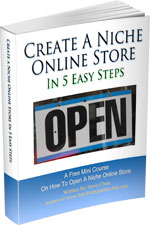
Ready To Get Serious About Starting An Online Business?
If you are really considering starting your own online business, then you have to check out my free mini course on How To Create A Niche Online Store In 5 Easy Steps.
In this 6 day mini course, I reveal the steps that my wife and I took to earn 100 thousand dollars in the span of just a year. Best of all, it's absolutely free!

